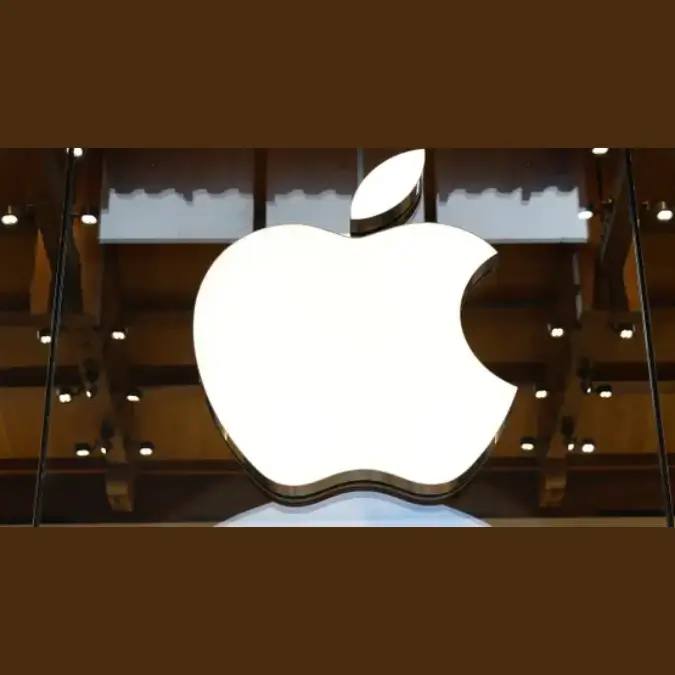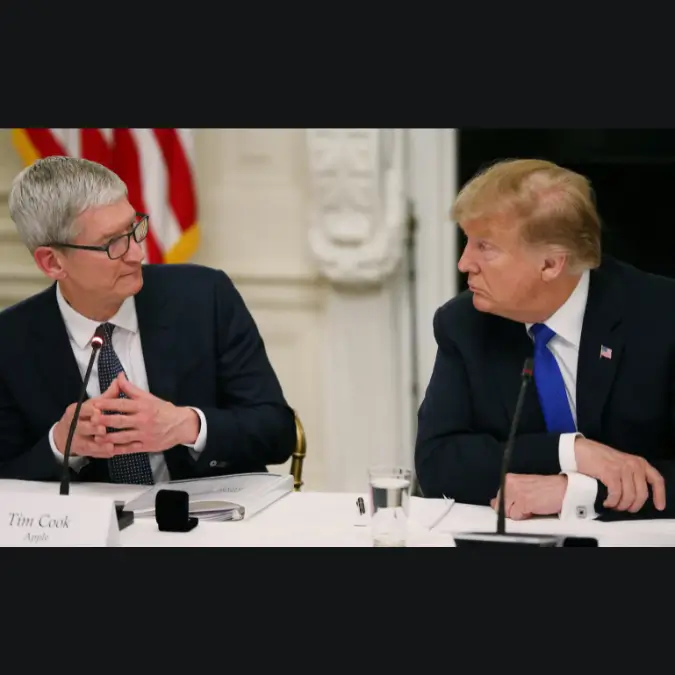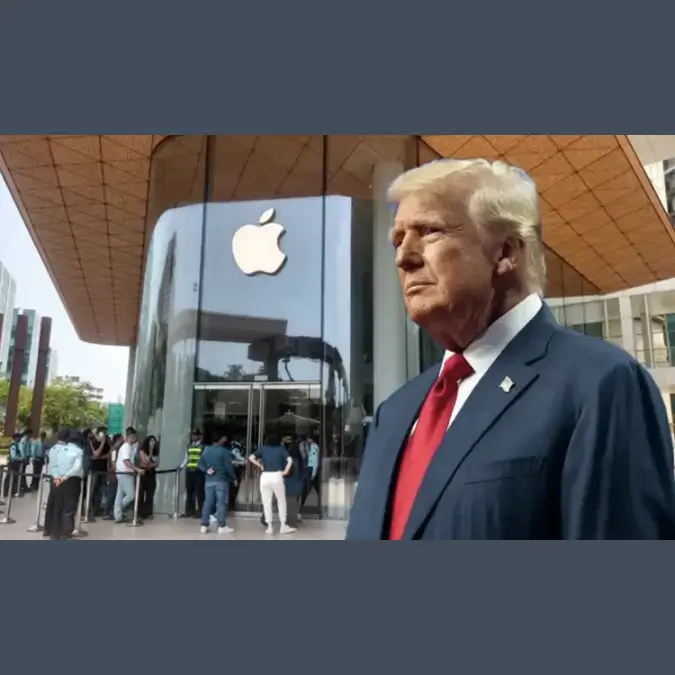The global smartphone market is not a stranger to political and economic stress, but the latest announcement about a 25 percent tariff on Apple to sell iphone manufactured by India in the US has sent shockwaves through the industry. This unexpected step announced by former US President Donald Trump, threatens to increase production in India and expand its global supply chain to Apple’s ambitious plans.
In this blog, we dive into the 25 percent tariff on Apple for the company, its Indian manufacturing strategy, and wide implications for the international trade and smartphone market. Whether you are a technical enthusiast, investor, or eager about the dynamics of global business, this article breaks the situation in simple terms.

What Is the 25 percent Tariff on Apple About?
The 25 percent tariff on Apple refers to a proposed import duty that Donald Trump has threatened to impose on iPhones created in India, but has been sold in the United States. Essentially, if Apple selects the option to sell iPhones manufactured in India within the US market, Trump has warned to impose a 25 percent tax on these devices.
The announcement directly challenges Apple’s recent steps to diversify its supply chain from China and to diversify its supply chain as part of its “Make in India” initiative in India. The tariff effectively punishes Apple for outsourcing outside the US, pushing the company to reconsider where its products are manufactured and sold.
Why Did Trump Announce This Tariff?
The origin of this decision lies in Trump’s broad agenda to encourage domestic creation and reduce dependence on foreign manufactured products. During his presidential and constant influence, Trump has often advocated production within American borders to promote local jobs and economic growth for American companies.
Apple’s step to cut the costs paid on Chinese imports and to ignore tariffs, with a clear indication to prioritize American-made products, to prioritize American-made products, to apply a 25 percent tariff on Apple iPhone India-made , Apple’s India-made iPhones. Tariff aims to discourage companies like Apple from outsourcing jobs and manufacturing in other countries.
How Does the Tariff Affect Apple’s India Manufacturing Plans?
Apple’s strategy for the manufacture of iPhones in India is an important part of its global supply chain diversification. The company has invested billions in Indian factories, aims to reduce its dependence on China and complete the rapidly growing Indian smartphone market.
However, 25 percent tariff on Apple have significantly threatened the scheme. If Apple faces high import taxes when iPhones built in India are sold in the US, the company may lose a significant competitive profit-cost efficiency. Increased tariffs will make the iPhone manufactured more expensive in India in the US, which will potentially reduce sales and profitability.
Impact on Apple’s Global Supply Chain
Apple’s supply chain is one of the most complex and skilled in the world. It spreads to several countries with assembly lines in China, India and other parts of Asia. A 25 percent tariff on Apple is a serious challenge for this model to increase the cost and forcing Apple to reconsider its manufacturing footprint.
Many analysts believe that Apple may seem impractical to transfer back to the US due to high labor costs and lack of existing infrastructure to the US. At the same time, exporting India-made iPhones into the US under the threat of a 25 percent tariff may no longer be viable.
What Are the Economic Implications?
25 percent tariff on Apple is not just a corporate issue; Its comprehensive economic results are:
- For India: Apple’s Indian manufacturing boom is creating jobs and promoting local economies. Tariffs can slow down this development, further discourage foreign investment, and affect India’s ambitions to become a global manufacturing center.
- For the US market: Consumers may face high iPhone prices if tariffs lead to increase in production costs. It can also limit the availability of cheap iPhone models assembled in India.
- For global trade: Tariffs can increase tension between the US and India, complicate business relations and potentially increase anti -anti -tariffs or policy changes.
How Has Apple Responded?
Apple remains relatively quiet on the direct effect of 25 percent tariff on Apple, but the inner sources in the industry suggest that the company is searching for many options:
- To transfer over production in countries without tariff hazards.
- To interact with American policy makers to reduce or exempt iPhones created by India.
- Focusing on local markets, Apple may prioritize selling India-made iPhones domestic or in areas without duties and obstacles.

What Does This Mean for Indian Consumers?
While this tariff mainly targets the US market, it can indirectly affect Indian consumers:
- If Apple slows India manufacturing due to tariff pressure, employment generation may decline in the region.
- India’s smartphone market can see the largest, low product launch or limited availability globally if Apple rewrite its India strategy.
Will This Tariff Affect Other Companies?
Apple is not the only technical veteran affected by such business policies. Other smartphone manufacturers with diverse production in India or similar countries can also face tariffs or trade restrictions based on American policies.
The Bigger Picture: US-India Trade Relations
The 25 percent tariff on Apple also reflects the delicate balance act in the US-India trade relations. India wants to attract foreign investment and increase manufacturing, while the US wants to protect its domestic industries.
This tariff declaration can carry forward both countries to interact on better trade terms, but it also underlines geopolitical tensions that affect global trade decisions.
Can Apple Avoid the Tariff?
There are some ways to reduce the effect of 25 percent tariff on Apple :
- Increase the US-based assembly: Although expensive and logically challenging, Apple may extend the local assembly in America.
- Efforts to advocate: Apple can work to secure discounts with American MPs.
- Alternative Supply Series: Apple may transfer production to other countries that do not trigger tariffs.
- Pricing strategies: Apple may absorb certain costs or partly pass them to consumers.
The Historical Context of Tariffs on Technology Products
Tariffs on technology products are not new. Over the years, the US government has imposed tariffs on various imported electronics to protect domestic industries or as part of trade disputes.
For example, during the US-China trade war, tariffs were imposed on Chinese-made electronics, which affected companies such as Apple. The 25 percent tariff on Apple fits into this broad historical pattern where tariffs are used as an equipment in business talks or economic policy.
Difference is now geographical change in production. India has emerged as an important alternative manufacturing center, which has complicated traditional trade dynamics between the US and China.
Why India Matters for Apple
India is not only another manufacturing place for Apple; It is a strategic market and production center. With over 1.4 billion people and a growing middle class, India represents one of the largest smartphone markets globally.
Apple’s investments in India include the construction of local assembly plants and sourcing components. This not only reduces costs, but also helps Apple to follow India’s local sourcing laws, which is capable of selling products at competitive prices in the Indian market.
However, 25 percent tariff on Apple have threatened to disrupt these efforts by adding new costs and uncertainties to Apple’s global supply chain.
The Challenge of Producing iPhones in the US
Apple has seen India (and before China) for manufacturing, cost efficiency. The US has a lot of labor costs, causing large -scale iPhone production to become expensive.
In addition, the complex supply chain required for the iPhone components – including chip construction, glass production and assembly – are not fully installed in the US, which requires Apple.
Rebuilding or transferring this entire supply chain to the US to avoid a 25 percent tariff on Apple can be prohibitively expensive and time -consuming.
What Does This Mean for Apple’s Competitors?
Competitors like Samsung, Xiaomi and OnePlus are also expanding manufacturing in India and other countries. The US tariff stance can transfer competitive benefits to the smartphone market.
If Apple withstands high tariffs on India-made iPhones, its competitors can capitalize by keeping production outside the US or focusing on other markets. This can affect Apple’s market share, especially in value-sensitive segments.
The Consumer Perspective: Will Prices Rise?
The 25 percent tariff on Apple will probably increase the cost of India-made iPhones imported into the US. Companies often pass tariff costs on consumers through high prices.
This means that American buyers can see the price growth on some iPhone models, especially gathered in India. While Apple has a premium brand image and loyal customer base, the price growth can affect the decision to buy in a competitive smartphone market.
The Role of Political Influence in Business Decisions
The 25 percent tariff on Apple throws light on how deep politics is with business. Companies like Apple should navigate not only the forces of the market, but also political agenda, business policies and diplomatic relations.
For global corporations, this means adopting changing policies quickly and maintaining flexibility in manufacturing and sales strategies.

What Could Be the Long-Term Effects?
In the long run, 25 percent tariff on apple can give rise to many results:
- A reconsideration of global supply chains, weighing the risks of tariffs with companies more carefully.
- Pressure increased on governments to interact on tariffs and barriers to reduce business agreements.
- Potential acceleration of automation and advanced manufacturing technologies in high -cost countries to offset labor costs.
India’s Manufacturing Landscape: Challenges and Opportunities
The 25 percent tariff on Apple highlights India’s capacity and challenges of India’s manufacturing ambitions. While India provides a large task force and growing infrastructure, there are obstacles:
- Infrastructure Gaps: Logistics and supply chain infrastructure still requires significant upgradation for the match of countries like China.
- Regulatory complexity: Navigating India’s regulator environment can be complicated for foreign companies.
- Skilled labor: While abundant, training is important for special manufacturing.
On the positive side, the Government of India has initiated several initiatives such as “Make in India” and incentives related to production to promote manufacturing development. Apple’s presence has intensified these efforts, but the tariff shows new risks to this speed.
Could This Tariff Spur New Trade Negotiations?
Business stress often causes new interaction, and a 25 percent tariff on Apple can be a catalyst for renewed interaction between the US and India.
The two countries have much more than smooth trade relations: America wants to protect domestic jobs and industries, while India demands foreign investment and manufacturing development.
Future interaction may reduce exemption, low tariffs, or new business agreements that can solve these challenges. Business and consumers around the world will look closely for any success.
What Lessons Can Other Multinationals Learn?
25 percent tariff on Apple serves as a caution story for other multinational corporations:
- Political risk matters: companies should take political decisions in their global strategies.
- Flexibility is important: having many production sites helps, but does not eliminate the risk.
- Connection with policy makers: Active dialogue with governments can sometimes reduce tariff effects.

Environmental and Ethical Considerations
As Apple expands production in India, environment and moral concerns become important. Increased manufacturing can stress local resources, increase pollution levels and increase the questions of labor standards.
The 25 percent tariff on Apple indirectly highlights the need for durable and responsible manufacturing practices. Apple has committed to carbon neutrality and moral sourcing, but tariffs and shifting production bring new complications in maintaining these commitments.
How Consumers Can Stay Informed
Consumers should be informed, with 25 percent tariff on Apple affecting product availability and prices, consumers should be informed:
- Follow the update from official apple announcements.
- Keep an eye on changes in pricing in the US and India markets.
- Understand how tariffs can affect your choice between different smartphone brands.
Being aware helps consumers to make better purchasing decisions in the changing market.
The Road Ahead for Apple and India
While 25 percent tariff on Apple are immediate challenges, it also provides lessons and opportunities:
- Apple can’t innovate in production techniques to reduce costs.
- India can improve infrastructure improvements and expedite policy reforms.
- Both sides could find a middle ground through trade diplomacy.
The future will depend on how quickly and effectively these reactions take shape.
Final Thoughts: Navigating the 25 Percent Tariff on Apple
The announcement of a 25 percent tariff on Apple for iPhones created by India is a significant twist point in Apple’s global manufacturing journey. Although it presents challenges, it also opens questions about the future of manufacturing, business and corporate strategy.
For Apple, it would be important to balance cost, quality and geopolitical risks to maintain your leadership in the smartphone market.
For India, tariff is a wake-up call to further strengthen its manufacturing ecosystem and make flexibility against global business uncertainties.
FAQ: Understanding the 25 Percent Tariff on Apple and Its Impact
1. What is the 25 percent tariff on Apple?
The 25 percent tariff on Apple refers to a proposed import duty that former US President Donald Trump threatened to impose on iPhones manufactured in India but sold in the United States. This tariff would increase the cost of India-made iPhones entering the US market, potentially affecting Apple’s pricing and supply chain decisions.
2. Why is the 25 percent tariff on Apple being discussed now?
This tariff proposal is part of Trump’s broader strategy to encourage domestic manufacturing in the US and reduce reliance on foreign-made products. Apple’s move to shift iPhone production to India triggered concern, and the 25 percent tariff on Apple is aimed at discouraging outsourcing and promoting local job creation within the United States.

3. How will the 25 percent tariff on Apple affect iPhone prices?
If enforced, the 25 percent tariff on Apple’s India-made iPhones could lead to higher prices for US consumers. Apple may either absorb the cost partially or pass it on to buyers, making certain iPhone models more expensive in the American market. This could impact consumer demand, especially for budget-conscious users.
4. Will this tariff affect Apple’s production in India?
Yes, the tariff poses a significant risk to Apple’s India manufacturing plans. The 25 percent tariff on Apple could reduce the cost advantage of producing in India, forcing Apple to rethink its investment and long-term manufacturing strategy in the region, potentially slowing its Make in India efforts.
5. How does the 25 percent tariff on Apple impact Indian workers?
If Apple reduces or halts iPhone manufacturing in India due to the tariff, it could affect job creation and economic development in regions where Apple’s factories are located. Thousands of workers may face job insecurity, and India’s goal to become a global manufacturing hub could be slowed or delayed.
6. Can Apple avoid the 25 percent tariff?
Apple might avoid the tariff by expanding production in countries not subject to US tariffs, negotiating exemptions with US policymakers, or increasing its US-based manufacturing. However, each option presents financial and logistical challenges. Apple must weigh these choices carefully to protect its brand and profitability.
7. Does this tariff only apply to Apple?
While the focus is currently on Apple, the 25 percent tariff sets a precedent that could affect other tech companies outsourcing production to India or other foreign countries. It signals a broader push toward reshoring production to the United States and adds new risks to global supply chain strategies.





